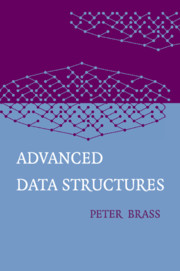Book contents
2 - Search Trees
Published online by Cambridge University Press: 25 January 2011
Summary
A search tree is a structure that stores objects, each object identified by a key value, in a tree structure. The key values of the objects are from a linearly ordered set (typically integers); two keys can be compared in constant time and these comparisons are used to guide the access to a specific object by its key. The tree has a root, where any search starts, and then contains in each node some key value for comparison with the query key, so one can go to different next nodes depending on whether the query key is smaller or larger than the key in the node until one finds a node that contains the right key.
This type of tree structure is fundamental to most data structures; it allows many variations and is also a building block for most more complex data structures. For this reason we will discuss it in great detail.
Search trees are one method to implement the abstract structure called dictionary. A dictionary is a structure that stores objects, identified by keys, and supports the operations find, insert, and delete. A search tree usually supports at least these operations of a dictionary, but there are also other ways to implement a dictionary, and there are applications of search trees that are not primarily dictionaries.
Two Models of Search Trees
In the outline just given, we supressed an important point that at first seems trivial, but indeed it leads to two different models of search trees, either of which can be combined with much of the following material, but one of which is strongly preferable.
- Type
- Chapter
- Information
- Advanced Data Structures , pp. 23 - 49Publisher: Cambridge University PressPrint publication year: 2008



